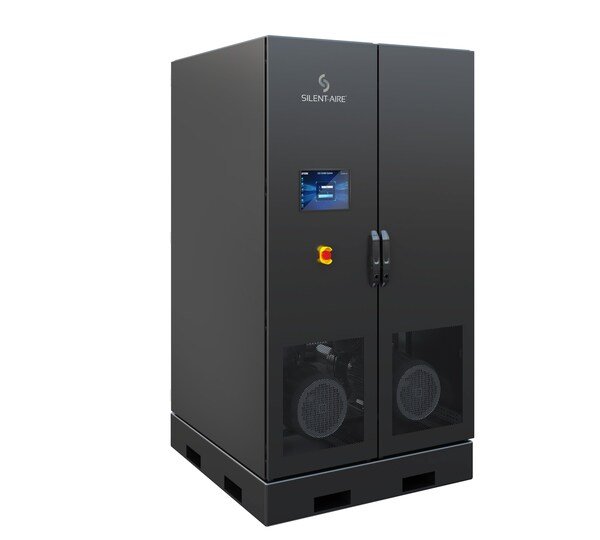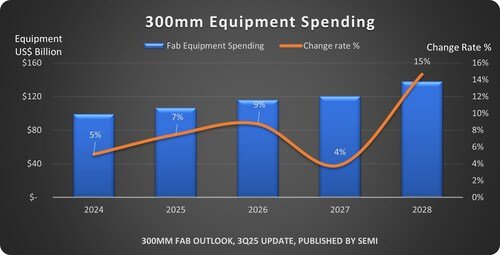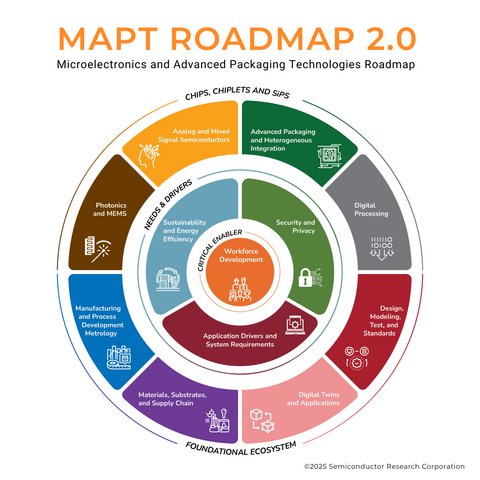Intel Corporation reported third-quarter 2025 financial results.
“Our Q3 results reflect improved execution and steady progress against our strategic priorities,” said Lip-Bu Tan, Intel CEO. “AI is accelerating demand for compute and creating attractive opportunities across our portfolio, including our core x86 platforms, new efforts in purpose-built ASICs and accelerators, and foundry services. Intel’s industry-leading CPUs and ecosystem, along with our unique U.S.-based leading-edge logic manufacturing and R&D, position us well to capitalize on these trends over time.”
“We took meaningful steps this quarter to strengthen our balance sheet, including accelerated funding from the U.S. Government and investments by NVIDIA and SoftBank Group that increase our operational flexibility and demonstrate the critical role we play in the ecosystem,” said David Zinsner, Intel CFO. “Our stronger than expected Q3 results mark our fourth consecutive quarter of improved execution and reflect the underlying strength of our core markets. Current demand is outpacing supply, a trend we expect will persist into 2026.”
Q3 2025 Financial Results
In the third quarter, the company generated $2.5 billion in cash from operations.
The financial results presented in this release are preliminary and unaudited, and may be revised based on consultation with the staff of the SEC, as discussed below under “Accounting for U.S. Government Transactions.”
Business Unit Summary
In the first quarter of 2025, the company made an organizational change to integrate the Network and Edge Group (NEX) into CCG and DCAI and modified Intel's segment reporting to align to this and certain other business reorganizations. All prior-period segment data has been retrospectively adjusted to reflect the way Intel's chief operating decision maker internally receives information and manages and monitors the company's operating segment performance. Effective September 12, 2025, Altera, previously a wholly owned subsidiary, was deconsolidated from Intel’s consolidated financial statements following the closing of the sale of 51% of Altera's issued and outstanding common stock. Altera's financial results of operations were included in Intel’s consolidated financial results and its "all other" business unit category for all periods presented through September 11, 2025. There are no changes to Intel's consolidated financial statements for any prior periods.
Business Highlights
- Intel and the Trump Administration announced an agreement to support the continued expansion of American technology and manufacturing leadership through $8.9 billion in funding from the U.S. Government. During the quarter, Intel received $5.7 billion from the U.S. Government.
- Intel and NVIDIA announced a collaboration to jointly develop multiple generations of custom data center and PC products across hyperscale, enterprise and consumer markets. The collaboration will integrate the strengths of Intel's leading CPU technologies and x86 ecosystem with NVIDIA’s AI and accelerated computing platforms using NVIDIA NVLink.
- NVIDIA also agreed to invest $5.0 billion in Intel common stock.
- SoftBank Group made a $2.0 billion investment in Intel common stock, reflecting its belief that Intel will play a critical role in expanding advanced semiconductor manufacturing and supply in the United States.
- Intel unveiled the architecture of its Intel® Core™ Ultra series 3 processors (code-named Panther Lake), the first client SoCs built on Intel 18A technology. Additionally, Intel advanced its relationship with Microsoft through a collaboration with Windows ML and the integration of Intel vPro® manageability with Microsoft Intune.
- The company provided a first look at Intel® Xeon® 6+ (code-named Clearwater Forest), Intel’s next-gen server product on Intel 18A, showing significant power and performance gains. It also announced details of a new inference-optimized GPU code-named Crescent Island for token clouds and enterprise-level inference.
- Fab 52, Intel's fifth high-volume fab at its Ocotillo campus in Chandler, Arizona, became fully operational. This facility manufactures Intel 18A wafers, the most advanced logic wafers developed and produced in the United States, and is part of the more than $100 billion Intel is investing to expand its domestic operations.
- Intel received $5.2 billion with the completion of the Altera transaction and a stake sale of Mobileye.
Business Outlook
Intel's guidance for the fourth quarter of 2025 includes both GAAP and non-GAAP estimates as follows:
Effective September 12, 2025, Altera, previously a wholly owned subsidiary, was deconsolidated from Intel’s consolidated financial statements following the closing of the sale of 51% of Altera's issued and outstanding common stock. As a result, fourth quarter guidance excludes the results of Altera.
Reconciliations between GAAP and non-GAAP financial measures are included below. Actual results may differ materially from Intel’s business outlook as a result of, among other things, the factors described under “Forward-Looking Statements” below. The gross margin and EPS outlooks are based on the midpoint of the revenue range.
Accounting for U.S. Government Transactions
Intel’s transactions with the U.S. Government during the third quarter of 2025, including the equity issuances and the amendment to the commercial CHIPS Act agreement, are complex. There is limited precedent for the accounting treatment of such transactions. While Intel believes it has selected the appropriate accounting approach for these transactions in the third quarter 2025 financial results reported in this release, there are other potential approaches that, if applied, would result in materially different financial results for the quarter. Given the complexity associated with these transactions, Intel recently initiated a consultation with the staff of the SEC to seek confirmation that they do not disagree with the accounting treatment. Due to the current U.S. Government shutdown, Intel has been unable to conclude its consultation with the staff of the SEC. If the staff of the SEC were to have a different view of the appropriate accounting treatment of these transactions, Intel may revise its third quarter 2025 financial results, including the recognition of additional costs or losses, and any such revisions could be material.
For a description of the transactions with the U.S. Government entered into during the third quarter of 2025, see our Current Reports on Form 8-K filed with the SEC on August 25, 2025 and August 29, 2025.
Forward-Looking Statements
This release contains forward-looking statements that involve a number of risks and uncertainties. Words such as "accelerate", "achieve", "aim", "ambitions", "anticipate", "believe", "committed", "continue", "could", "designed", "estimate", "expect", "forecast", "future", "goals", "grow", "guidance", "intend", "likely", "may", "might", "milestones", "next generation", "objective", "on track", "opportunity", "outlook", "pending", "plan", "position", "possible", "potential", "predict", "progress", "ramp", "roadmap", "seek", "should", "strive", "targets", "to be", "upcoming", "will", "would", and variations of such words and similar expressions are intended to identify such forward-looking statements, which may include statements regarding:
- our business plans and strategy and anticipated benefits therefrom;
- projections of our future financial performance, including future revenue, gross profits, capital expenditures, and cash flows;
- projected costs and yield trends;
- future cash requirements, the availability, uses, sufficiency, and cost of capital resources, and sources of funding, including for future capital and R&D investments and for returns to stockholders, such as stock repurchases and dividends, and credit ratings expectations;
- future products, services, and technologies, and the expected goals, timeline, ramps, progress, availability, production, regulation, and benefits of such products, services, and technologies, including future process nodes and packaging technology, product roadmaps, schedules, future product architectures, expectations regarding process performance, per-watt parity, and metrics, and expectations regarding product and process leadership;
- investment plans and impacts of investment plans, including in the US and abroad;
- internal and external manufacturing plans, including future internal manufacturing volumes, manufacturing expansion plans and the financing therefor, and external foundry usage;
- future production capacity and product supply;
- supply expectations, including regarding constraints, limitations, pricing, and industry shortages;
- plans and goals related to Intel's foundry business, including with respect to anticipated customers, future manufacturing capacity and service, technology, and IP offerings;
- expected timing and impact of acquisitions, divestitures, and other significant transactions;
- expected completion and impacts of restructuring activities and cost-saving or efficiency initiatives;
- future social and environmental performance goals, measures, strategies, and results;
- our anticipated growth, future market share, customer demand, and trends in our businesses and operations;
- projected growth and trends in markets relevant to our businesses;
- anticipated trends and impacts related to industry component, substrate, and foundry capacity utilization, shortages, and constraints;
- expectations regarding government funding, incentives, policies, and priorities;
- future technology trends and developments, such as AI;
- future macro environmental and economic conditions;
- geopolitical tensions and conflicts, including with respect to international trade policies in areas such as tariffs and export controls, and their potential impact on our business;
- tax- and accounting-related expectations;
- expectations regarding our relationships with certain sanctioned parties; and
- other characterizations of future events or circumstances.
Such statements involve many risks and uncertainties that could cause our actual results to differ materially from those expressed or implied, including those associated with:
- the high level of competition and rapid technological change in our industry;
- the significant long-term and inherently risky investments we are making in R&D and manufacturing facilities that may not realize a favorable return;
- the complexities and uncertainties in developing and implementing new semiconductor products and manufacturing process technologies;
- our ability to time and scale our capital investments appropriately and successfully secure favorable alternative financing arrangements and government grants;
- implementing new business strategies and investing in new businesses and technologies;
- changes in demand for our products;
- macroeconomic conditions and geopolitical tensions and conflicts, including geopolitical and trade tensions between the US and China, the impacts of Russia's war on Ukraine, tensions and conflict affecting Israel and the Middle East, and rising tensions between mainland China and Taiwan;
- the evolving market for products with AI capabilities;
- our complex global supply chain supporting our manufacturing facilities and incorporating external foundries, including from disruptions, delays, trade tensions and conflicts, or shortages;
- recently elevated geopolitical tensions, volatility and uncertainty with respect to international trade policies, including tariffs and export controls, impacting our business, the markets in which we compete and the world economy;
- product defects, errata and other product issues, particularly as we develop next-generation products and implement next-generation manufacturing process technologies;
- potential security vulnerabilities in our products;
- increasing and evolving cybersecurity threats and privacy risks;
- IP risks including related litigation and regulatory proceedings;
- the need to attract, retain, and motivate key talent;
- strategic transactions and investments;
- sales-related risks, including customer concentration and the use of distributors and other third parties;
- our significantly reduced return of capital in recent years;
- US Government ownership of significant equity interests in the company;
- our debt obligations and our ability to access sources of capital;
- complex and evolving laws and regulations across many jurisdictions;
- fluctuations in currency exchange rates;
- changes in our effective tax rate;
- catastrophic events;
- environmental, health, safety, and product regulations;
- our initiatives and new legal requirements with respect to corporate responsibility matters; and
- other risks and uncertainties described in this release, our 2024 Form 10-K, our Q1 2025 Form 10-Q, our Q2 2025 Form 10-Q, and our other filings with the SEC.
Given these risks and uncertainties, readers are cautioned not to place undue reliance on such forward-looking statements. Readers are urged to carefully review and consider the various disclosures made in this release and in other documents we file from time to time with the SEC that disclose risks and uncertainties that may affect our business.
Unless specifically indicated otherwise, the forward-looking statements in this release do not reflect the potential impact of any divestitures, mergers, acquisitions, or other business combinations that have not been completed as of the date of this filing. In addition, the forward-looking statements in this release are based on management's expectations as of the date of this release, unless an earlier date is specified, including expectations based on third-party information and projections that management believes to be reputable. We do not undertake, and expressly disclaim any duty, to update such statements, whether as a result of new information, new developments, or otherwise, except to the extent that disclosure may be required by law.
















